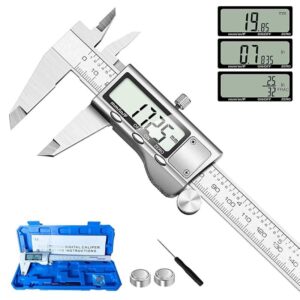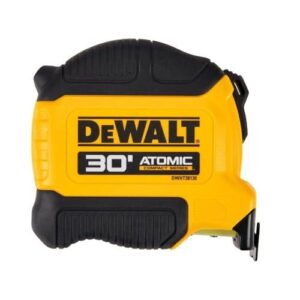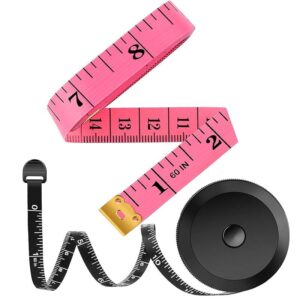Essential Tools for Accurate Measuring
Accurate measuring is vital in various fields, particularly in construction and design. To achieve precise measurements, it is essential to have the right tools at your disposal. Here are some of the most essential tools for accurate measuring:
- Tape Measure: A flexible measuring tool that can measure lengths and distances accurately. It is a must-have for any project.
- Laser Distance Measurer: This tool utilizes laser technology to measure distances quickly and accurately, often providing results on a digital display.
- Calipers: Used for measuring the distance between two opposite sides of an object, calipers provide high precision.
- Square: A tool used to measure and mark right angles, ensuring that your layout is correct.
- Level: This tool helps determine if a surface is horizontal or vertical, which is crucial for layout accuracy.
- My Take on the Inkbird ITC-308 Temperature Controller: Worth It?
- My Take on the Franklin ProSensor M210 Stud Finder: Is It Reliable?
- Digital Caliper Tool 6 Inch: My Honest Review and Insights
- KAIWEETS Voltage Tester Pro Review: Is It the Right Tool for You?
- AstroAI Digital Multimeter Tester Review: Is It a Must-Have Tool?
- My Take on the DEWALT Atomic Compact 30 ft. Tape Measure: Is It Good?
- Klein Tools Circuit Finder Review: My Thoughts on Its Performance
- iBayam Measuring Tape Review: Are These Soft Tapes Worth It?
- My Experience with the Fluke 1AC II VoltAlert Pocket Voltage Tester
Best Practices for Effective Layout Design
Creating an effective layout design requires careful planning and execution. Here are some best practices to follow:
- Start with a Clear Plan: Before beginning any layout, sketch out your design to have a clear vision of the end result.
- Use a Scale: Always draw to scale to help visualize the final dimensions accurately.
- Mark Reference Points: Use reference points to ensure that all measurements are based on a consistent starting point.
- Double-Check Measurements: Always measure twice to confirm accuracy before cutting or laying out materials.
- Keep It Simple: Avoid overcomplicating your design, which can lead to confusion and errors.
Common Measuring Mistakes to Avoid
Even experienced professionals can make mistakes when measuring. Here are some common errors to avoid:
- Rounding Measurements: Always use precise measurements instead of rounding to prevent inaccuracies.
- Ignoring the Scale: Not adhering to the scale during layout can lead to significant errors in dimensions.
- Not Considering Material Thickness: Failing to account for the thickness of materials can result in misalignment.
- Measuring from the Wrong Point: Starting measurements from an incorrect point can lead to a cascading series of errors.
- Neglecting to Use a Level: Not using a level can result in surfaces that are not flat or aligned properly.
Tips for Precision in Construction Layout
To achieve precision in construction layout, consider the following tips:
- Use a Chalk Line: This tool helps create straight lines over long distances, ensuring accurate layout.
- Employ the 3-4-5 Method: This method uses the Pythagorean theorem to create right angles accurately.
- Work in Sections: Break your layout into smaller, manageable sections for better accuracy.
- Check for Obstructions: Ensure that your layout is free of obstacles that could interfere with measurements.
- Document Your Measurements: Keep a record of your measurements to avoid confusion and errors.
How to Choose the Right Measuring Techniques
Selecting the right measuring techniques is crucial for the success of any project. Here are some considerations to help you choose:
- Project Type: Consider the nature of your project (e.g., construction, landscaping) to determine the most effective techniques.
- Accuracy Requirements: Assess how precise your measurements need to be and choose tools and techniques accordingly.
- Available Tools: Use the tools you have on hand, but be willing to invest in new ones if necessary for better accuracy.
- Experience Level: Choose techniques that match your skill level; complex methods may lead to errors if you are inexperienced.
- Time Constraints: Consider how much time you have to complete the project. Some techniques may be quicker but less accurate.









